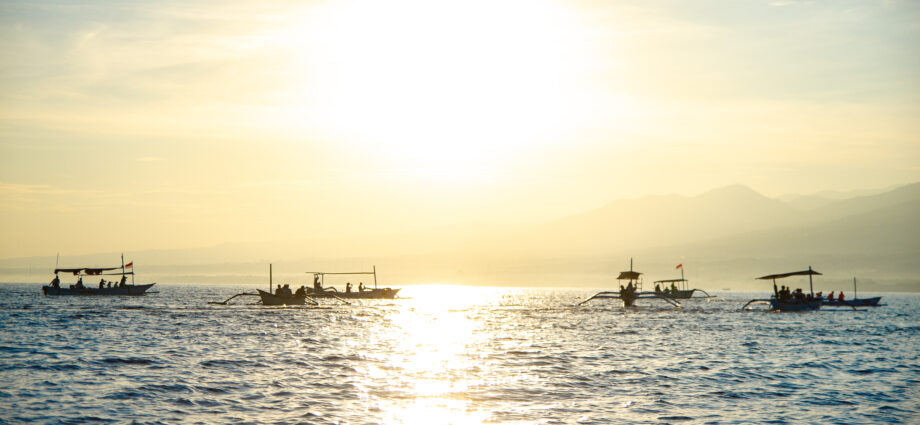
By Luky Adrianto, IPB University, Bogor Indonesia
June 24, 2023
A new approach should be considered to ensure coastal and marine resources are exploited sustainably.
Last March marked the end of 15 years of tough negotiations.
The UN announced member states had agreed to the wording of what is becoming known as the ‘High Seas Treaty’ to ensure the conservation and sustainable use of marine life in areas beyond national jurisdiction.
A key to the agreement, which has yet to be signed, was to guarantee that developing nations lacking the financial resources for expensive research, were not marginalised and denied a share of the anticipated benefits from the commercial exploitation of materials found in international waters.
The ocean economy supports the livelihoods of almost half of Earth’s population and is predicted to double from USD$1.5 trillion in 2010, or 5 percent of global gross domestic product (GDP), to an estimated $3 trillion by 2030.
It represents a massive opportunity for mutual benefit, but there are challenges: unsustainable human activity in marine areas being the biggest.
Human development is causing climate-induced changes, such as more extreme weather events, ocean acidification, sea level rise, ocean temperature increases, deoxygenation, and falling sea ice coverage.
When you consider other impacts such as overfishing, ship strikes and wildlife mortality, habitat destruction (including of spawning and nursery grounds), pollution (including underwater noise pollution) and the introduction of invasive species, it adds up to a very daunting challenge.
It’s why a new approach should be considered.
One concept to improve coastal and marine resource use is the blue economy, an inclusive marine economic system including ocean-based development that prioritises sustainable practices and the equitable distribution of economic benefit.
However, a lack of monitoring data hinders its implementation. So, international collaboration on the monitoring of coastal and marine ecosystems is required.
Indexes offer the ability to collate information from varied sources for repurposing into comparable datasets that provide an overview of coastal and marine resource use over time. Indexes can improve policy and management outcomes through a holistic understanding of coastal and marine resource development as well as through the implementation of adaptive management strategies.
An index that encompasses public and private sectors improves the ability of external funding schemes to address gaps which may delay the transition to more sustainable models of ocean use.
One such index was launched in 2020.
The Blue Economy Development Index takes a holistic approach to coastal and marine resource use by using social, economic and environmental indicators to track changes over time at national and international levels. The index supports the development of archipelagic and island states, a group of nations whose ongoing development is linked to the health of coastal areas.
The index currently reports on 47 island nations using a central algorithm with eight unique parameters that measure social, economic and environmental factors. The algorithm indicates what areas of a nation’s blue economy are strong and what areas need improvement.
The main principles of the index are sustainable development, adaptive management, ecosystem-based management, the precautionary principle, and good maritime governance.
Each index indicator needs to be populated with pertinent datasets to enable the core algorithm to determine which areas of the blue economy are doing well and which need improvement.
However a lack of data from some nations has hampered their ability to use science-based policy and management tools.
By improving monitoring efforts, such as creating a monitoring network of institutions with interests in the marine economy, future indexes can provide more accurate interpretations of the blue economy and its development. Plus a low score on the index could trigger further investment in the blue economy in the respective country.
Other ocean-related indexes already exist, such as the Ocean Health Index and the Coastal Governance Index. There are also indexes which focus on specific aspects of the ocean economy such as the Australian Institute of Marine Science’s Index of Marine Industry, Indonesia’s Green Economy Index or the Green Global Economy Index.
Where the Blue Economy Development Index differs is its focus on assessing and measuring the sustainable development and economic potential of coastal and marine resources.
The index stands out due to its emphasis on the blue economy and its unique approach.
Luky Adrianto is a professor in fisheries resources management at IPB University, Bogor, Indonesia. He is a policy analyst in fisheries and ocean management and a lead expert on the Blue Economy Development Index hosted by UN Development Programme-AIS Secretariat.
Subscribe to our newsletter.
The Blue Economy Development Index research was funded by the Archipelagic and Island States Forum and the United Nations Development Programme.
Originally published under Creative Commons by 360info™.
Editors Note: In the story “Blue economy” sent at: 07/06/2023 07:00.
This is a corrected repeat.

